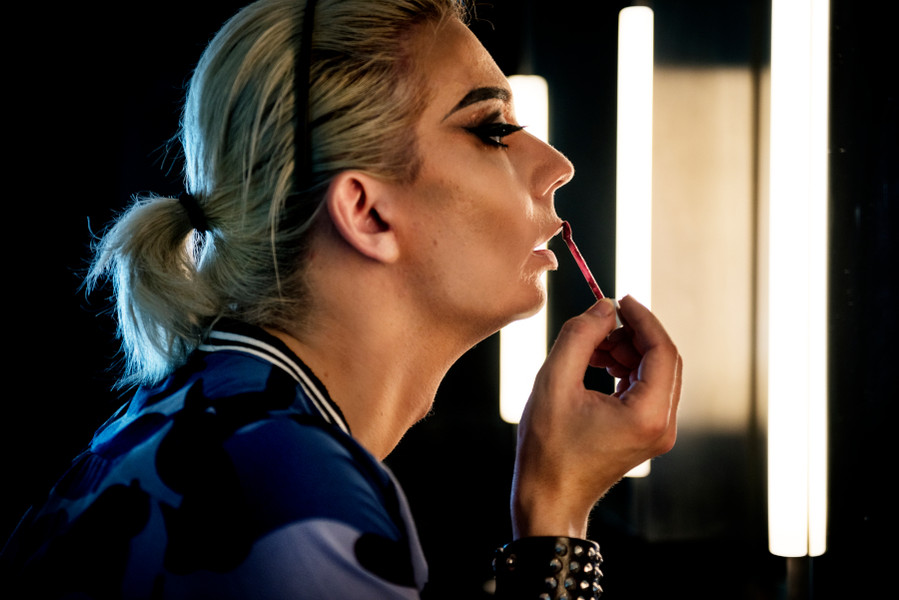Drag is, first and foremost, a form of art. And monetizing drag isn’t always easy as most people think. Some people consider drag as taboo, which means it doesn’t mesh well with capitalism in general. Most drag queens only have modest incomes and their expenses can easily reach up to $10,000 a year. But if there’s one thing you should know about drag queens, it’s their ingenuity that makes it possible to earn a living out of drag. Here are the tricks they use to make ends meet and continue performing underneath the spotlight.
The cost of doing drag
Nothing is more important to a drag queen than her costume. It embodies her drag persona and is what gets the crowd’s attention. Most drag queens spend heavily on their outfits to get the exact look they want. A basic, unstyled wig costs $50 and with a professionally-styled wig costing more than $200. Tights and padding can cost around $30-150 which are essential for completing that drag look. Dance tights hover at $20 to cover up the padding and leg hair.
Add in the make-ups, costume jewellery and heels, and you’re looking at around a total of $700-$1,000 just for a single outfit. It’s truly an expensive hobby and it’s not rare for drag queens to splurge more than $20,000 for their drag-related expenses annually.
Drag queen earnings
New queens normally earn $50 per show and this mainly consists of cash tips in the form on one-dollar bills. While tipping is not mandatory, it is a drag queen’s bread and butter. Keep in mind that most queens work as freelancers which means they pay for their own health insurance and retirement savings. Couple that with the lack of stability that a salaried position provides, income can vary greatly depending on where you live and the venues you’re performing at.
Successful queens make enough money to support themselves and their drag expenses. Case in point VyVan Vyxn who is a renowned drag star in the Pittsburgh area. She performs regularly at clubs, theatres, and private events with reported earnings of $800 a night. There is a way to make drag a very sustainable source of income and the bigger the venue you get to perform at, the more earnings you’ll get along the way.
Making your drag queen dream a reality
While the eye-popping expenses of drag might put off aspiring drag queens, do not let the costs discourage you. Most queens get into drag because of their passion and don’t necessarily think of it as a way to earn money. Jane Hamilton, a consumer finance expert at Mint and Turbo, believes that keeping a close eye on finances and doing promotional work is crucial for generating interest and having audiences pay to see you.
“Selling is an absolutely vital component to making a living off of performance,” Hamilton says. “No one is going to do this for you. If no one knows about you and your stage act, no one will pay for what you have to offer.”
With the advent of social media, aspiring drag queens can build a solid following and build up their audience from there. If you can land a gig with bigger-name performers, you’ll gain even more interest and of course, more exposure to audience-packed venues. Of course, the beginnings won’t be too great and you’ll find yourself taking lower pay or performing in less prestigious venues. But what matters is how you perform and how you can generate interest from your own drag persona.
Gina Tonic, one of New York’s biggest drag stars, says that drag can turn into a sustainable source of income if you approach it the right way. “It's definitely a sustainable long-term career, as long as you are smart about it and find ways to stand out and stay relevant,” Gina said. It’s not uncommon for new drag queens to juggle multiple day jobs to sustain their drag career. Usually, the path is to get better exposure and land bigger gigs to transition into drag full-time.
Jumpstart your drag career with a bit of creativity
Vyvan Vyxn wasn’t earning $800 per gig overnight. Like with most new drags, she had to go through the financial pitfalls and learned to work her way around it. She sold adult novelty products door-to-door while doing drag. A $600 product investment along with a $450 worth of drag costume netted Vyxn a successful five-year career in drag, with earnings that allowed her to live comfortably and live her drag life day in, day out.
“Drag is expensive. Drag is an art form. Drag is a talent," she adds. "Pay for your entertainment whenever you have the chance. Some performers work for next to nothing—always tip the queens! Even if they might not be your favourite they still put time, effort, and probably money into walking out on that stage.”
With a bit of hustle, persistence, and creativity, you can pursue that drag life and make a living doing what you love to do most. Take it from these successful drag stars who experienced the ups and downs of drag life and use that to generate interest and perform in bigger venues down the line.
 USD
USD
 EUR
EUR
 AUD
AUD
 GBP
GBP
 SGD
SGD

